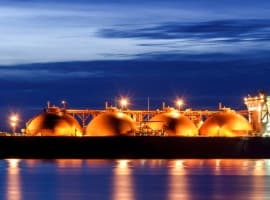
The report titled “Green Hydrogen Demand Assessment for C&I Consumers in India” by WWF India, in collaboration with ICF India, emphasizes the growing importance of green hydrogen in India’s journey toward achieving net zero emissions by 2070. This comprehensive report outlines the current landscape, challenges, and future potential of green hydrogen, particularly for commercial and industrial (C&I) sectors.
India, as the third-largest carbon dioxide emitter globally, recognizes the critical need to decarbonize its economy. Green hydrogen is positioned as a transformative solution, especially for “hard-to-abate” sectors like refineries, fertilizers, and heavy industries. These sectors collectively account for about 80% of India’s hydrogen demand, which grew from 5.59 million metric tons (MMT) in 2015 to 6.55 MMT in 2021. Notably, most of this demand is concentrated in western India due to the presence of major industrial hubs in Gujarat and Maharashtra.
The government has been proactive in addressing these challenges through initiatives like the National Green Hydrogen Mission, launched in January 2023. This mission aims to achieve a production capacity of 5 MMT of green hydrogen annually by 2030, potentially scaling up to 10 MMT. It seeks to replace traditional, fossil fuel-derived “grey hydrogen” with environmentally sustainable green hydrogen across various industries.
Key drivers of hydrogen demand include its applications as a feedstock for ammonia and methanol production and as a reducing agent in steel manufacturing. Hydrogen is also increasingly considered as a fuel for transportation and power generation. However, transitioning to green hydrogen necessitates overcoming significant challenges in production costs, infrastructure development, and policy clarity.
Currently, the production cost of green hydrogen remains high due to the energy-intensive process of electrolysis. Costs are expected to decline as technologies like proton exchange membrane (PEM) and alkaline electrolysis advance. By 2030, green hydrogen production costs are projected to decrease to approximately $2.5–$2.7 per kilogram, aligning with global competitiveness.
Infrastructure development poses another challenge. Hydrogen storage and transportation require specialized technologies due to its low density and high volatility. While compressed gas storage and liquid hydrogen transport are common, innovations like storing hydrogen in salt caverns are being explored. The distribution network remains underdeveloped, with most hydrogen consumed locally or within a limited radius of production sites.
The report highlights the need for a robust policy ecosystem to facilitate green hydrogen adoption. Recommendations include introducing green hydrogen obligations akin to renewable purchase obligations, establishing dedicated hydrogen hubs, and providing financial incentives such as viability gap funding (VGF) and production-linked incentive (PLI) schemes. Additionally, the development of hydrogen pipelines and storage facilities is critical for scaling up operations.
Stakeholder consultations reveal a consensus on the necessity of clear regulatory frameworks, incentives for renewable energy integration, and mandates for blending hydrogen in various applications. Collaboration between the government and industry stakeholders is vital to foster innovation, attract investment, and build a sustainable hydrogen ecosystem.
Looking ahead, the report envisions a significant shift in hydrogen consumption patterns. By 2030, demand is expected to reach 10–14 MMT, driven by sectors like ammonia, refineries, and emerging applications in transportation and chemicals. The transition to green hydrogen will not only reduce dependency on imported fossil fuels but also position India as a global leader in clean energy technologies.
In conclusion, the adoption of green hydrogen represents a critical step in India’s commitment to a low-carbon economy. While challenges remain, concerted efforts in technology development, infrastructure enhancement, and policy formulation can unlock the immense potential of green hydrogen, propelling India toward a sustainable future.













